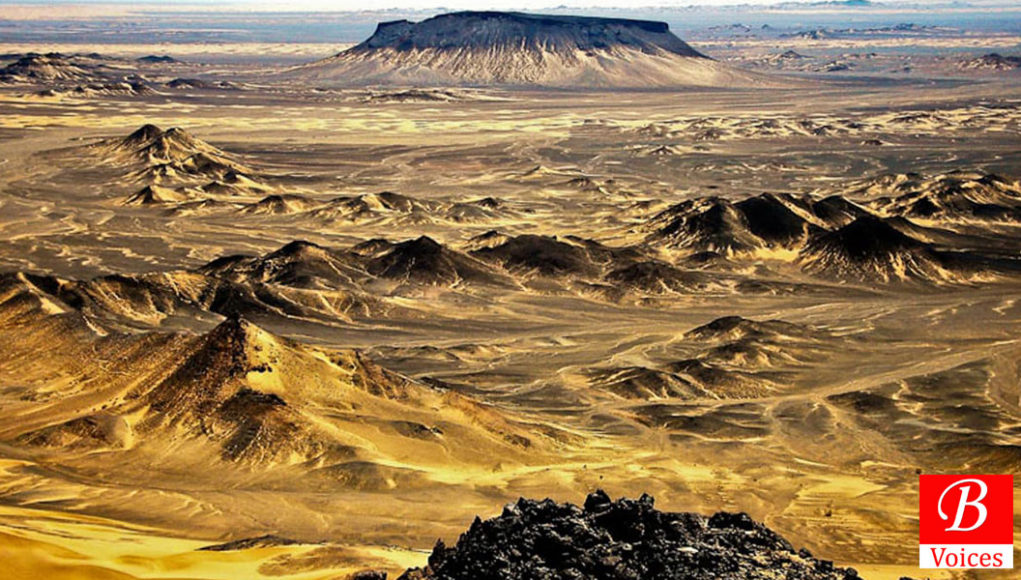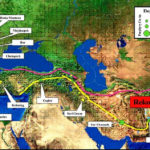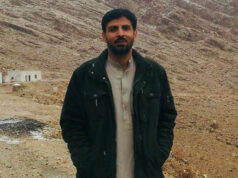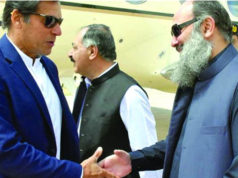 Mahfooz Ali Khan
Mahfooz Ali Khan
In order to develop mining potential of the province, the government of Balochistan, on 29th July, 1993, entered into a Joint Venture Agreement (JVA), through Balochistan Development Authority (BDA), as an agent, with a Delaware based American Company by the name and title of Broken Hill Properties Minerals (BHPM). The JVA was named a Chagai Hill Exploration Joint Venture Agreement (CHEJVA). The agreement provided for exploration on an area in District, Chagai, measuring 3,347,226 acres (13,546 Square kilometres). The Joint Venture Agreement (JVA) envisaged exploration by BHPM within a period of 6 years at its own cost over the Exploration Area, followed by preparation of a Feasibility Study to undertake mining of the proven mineral resource. According to the JVA, BHPM would have earned 75% interest on satisfactory completion of Exploration Program while BDA had 25% share in the JV, both in cost and profit.
Read also: Saindak Project: A Case of Robbing Balochistan
Since the agreement was not in line with the concession rules 1970, certain clauses of JVA were got relaxed by the Government of Balochistan (GOB). Accordingly, after concessions, the Joint Venture was granted 10 prospecting licenses in 1996 for an aggregated area of 1000 Sq. Km. The company (BHP), carried out reconnaissance and detailed work up to 1999 in these area and reported millions of tons of Copper, Gold at Reko-Diq. Two types of deposits i.e. (H4/Tanjeel Project and Western extension) deposits were reported by BHP. Subsequently BHP surrendered eight prospective licenses (PLs) and retained two PLs (No.2 & 4) of Reko-Diq and which were consolidated under a new PL No.14.
As per mother agreement, the company was given the right to transfer its share(s) to its Successors or Assigns, if it so desired. So BHP created a sister company by the name of MINCOR and transferred its share to the new company. MINCOR subsequently transferred its share to an Australian company, TETHYAN Copper Company, Australia. The new company did further exploration and proved the reserves economically viable and in substantial quantity. This success pushed the share price of Thethyan company and these shares sky rocketed in London Stock Exchange. This attracted a consortium dealing in Copper and GOLD, Antofagasta, 2006. This consortium included two companies, one of Chile, the largest Copper producer in the world and Barrick Gold Corporation of Canada, the number one gold producer of the world, and consortium jointly offered Thethyan’s shareholders to sell their shares to them in the open market. The shareholders accepted their offer and Antofagasta and Barrick of Gold, Canada, jointly and equally purchased 100% share of TCC.
The Scope of FSR is restricted to mineralization of H14 and H15 deposits with following
components:-
(I) Development of an open pit-mine.
(ii) Supporting infrastructure.
(iii) Concentrator establishment.
(iv) Power Station.
It is to be clarified here that the consortium for legal and technical reasons got itself registered in Pakistan with the name and title of Tethyan Copper Company, Pakistan.
On 15-02-2011 TCCP submitted application for the grant of Mining Lease over an area of 99.70 Sq. km. The TCCP did not fulfil the condition of rule 47 and 48 of BMR 2002. Mining lease was rejected on 15th November 2011 by the licensing authority. TCC went into an appeal before the Secretary Mines and Minerals under rule 70 of BMR 2002, after hearing same was also rejected by the appellate authority. After rejection of mining lease application TCC went in an appeal into ICSID and ICC. The decision on appeal before ICSID and later results of litigation is a long story, which will be covered some other time. Things remain shrouded till when Tehtyan Copper Company, Australia transferred its share to the consortium, Antofagasta and Barrick of Gold, so many issues cropped up.
Ever since first agreement with BHP, very few knew about details of the agreement. The consortium wanted two new agreements, the Share Holder’s Agreement and Mining Agreement. The first agreement was to be signed between government of Balochistan and the Company. The second agreement involved Government of Balochistan, Government of Pakistan and the Company. At this stage when papers were scrutinised, it was revealed that so many things were done without approval at appropriate level. Following points needed clarification:
Who allowed extension beyond initial 6 years, and why?
Nowhere at exploration stage, has the host country shared the cost. Why government of Balochistan and BDA accepted this condition? This clause provided that in case BDA could not pay its share of 25%, the company would raise it from International financial market on behest of BDA and BDA would be liable to pay or adjust against its future profits. So the company raised around $300.0 Million on behest of BDA, thereby creating a future liability.
Who allowed the company transfer of its share to Successor or Assign, without prior approval of the Second Party? If it was not provided in the mother agreement, then why it was not blocked?
Why in Novation Agreement or Addendum, the company was allowed the right of first Refusal in award of Mining License. This clause impliedly given the company leverage legally and they claimed the right for Mining License.
Who allowed the landing rights to the company?
Why arbitration was kept in ICC and ICSID? Where Law of the Land operates, all legal issues are to be sorted out under those laws. Here by accepting this clause, hands were tied.
These and other issues created utter confusion and stalled the work on this vital project, which could change the destiny of this province, when government wanted to develop the facility itself by relieving the company. The previous government created a project to develop and operated this mining facility but that could not make any headway. That is yet another story of mismanagement, to be discussed at some later stage.
Writer is a retired Bureaucrat and Former Secretary Finance of Government of Balochistan.
Disclaimer: Views expressed in this article are those of the author and Balochistan Voices not necessarily agrees with them.
Share your comments!









